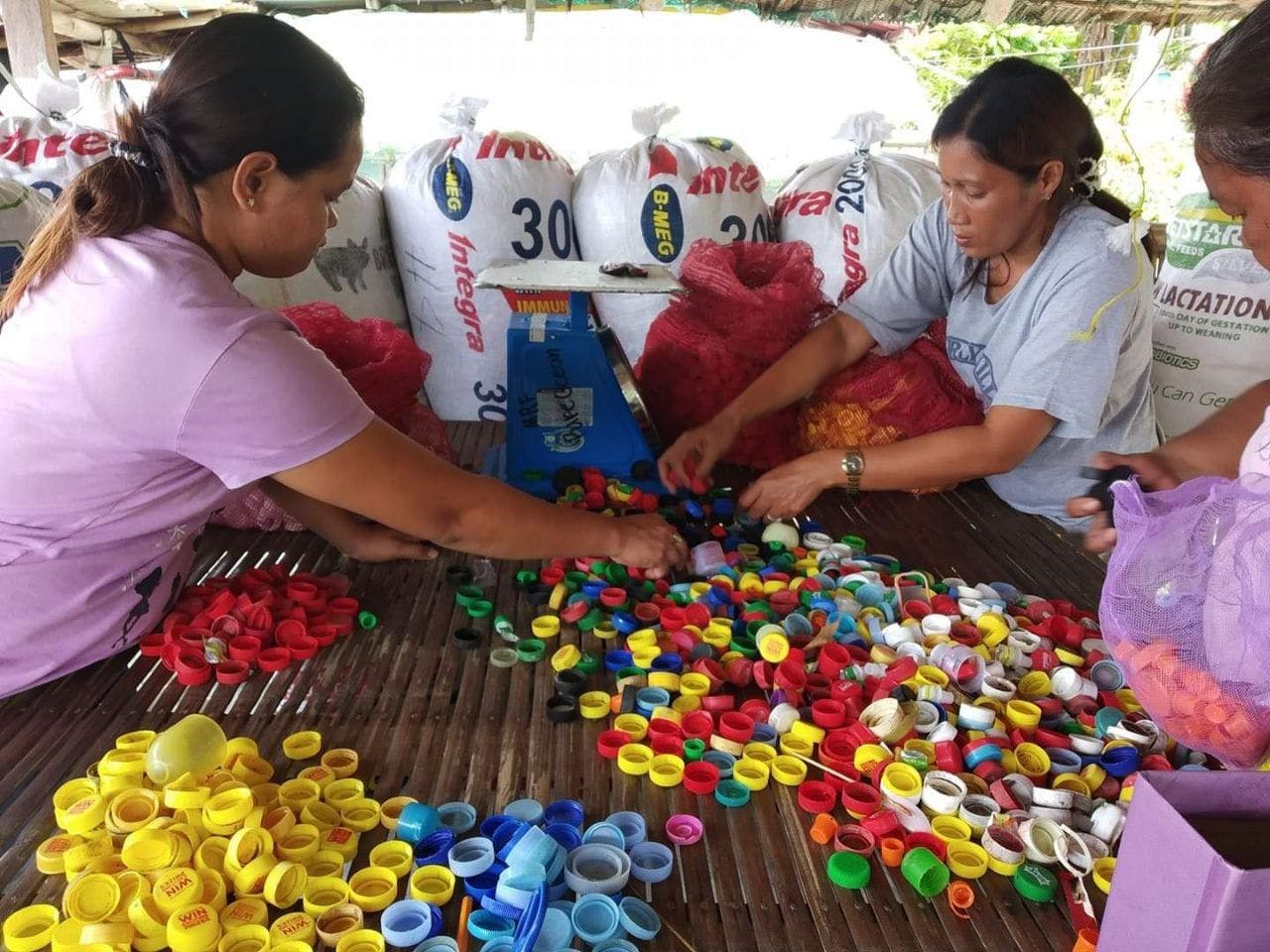The Philippines’ extended producer responsibility (EPR) law, which requires big companies to recover their plastic footprint, aims to encourage the people collecting the waste to turn their trade into a more formal privately held business, said a plastics recycling industry expert.
To continue reading, subscribe to Eco‑Business.
There's something for everyone. We offer a range of subscription plans.
- Access our stories and receive our Insights Weekly newsletter with the free EB Member plan.
- Unlock unlimited access to our content and archive with EB Circle.
- Publish your content with EB Premium.
“We have to build the infrastructure for the informal waste system and try to formalise and develop them [waste pickers] into entrepreneurs because that is what they are in their own right,” Crispian Lao, founder of the Philippine Alliance for Recycling and Materials Sustainability (PARMS), told Eco-Business.
Unlike the EPR system globally, the Philippine law includes the recovery of flexible plastic, which waste pickers have historically not been able to sell. Now that this material has value, it allows them to earn more, said Lao, who was one of the industry experts consulted in crafting the law.
Flexible plastics, made from polyethylene (PE) or polypropylene (PP) material primarily used to make bread and carrier bags, beverage bottle labels and tissue wraps, are included in the country’s EPR scheme due to poor infrastructure to collect and properly dispose of it, unlike in other countries which have waste-to-energy technology that can burn it, added Lao.
Rigid plastics like bottle caps, made of high density polyethylene (HDPE) and PP were the only types of plastic recovered by waste pickers previously because these materials are more easily recycled.
Up to 74 per cent of plastic in the Philippines that ends up in the ocean is from waste that has already been collected, according to a 2018 WWF report.

Residents of Tingloy island in the Verde Island Passage segregate bottle caps which are rigid plastics that are made of high density polyethylene (HDPE) and polypropylene (PP) that are easily recycled. Image: Pure Oceans
In January this year, the Philippine environment department unveiled the rules and regulations for implementing the EPR law, which requires large-scale companies, mostly multi-nationals, to manage their plastic packaging waste throughout the life cycle of their products.
Companies can either do their own recovery or go through waste diverters like waste picker cooperatives, junk shops or materials recovery facilities to recover, recycle or dispose of the plastic waste for a fee, said Lao, who is also vice-chairman of the National Solid Waste Management Commission.
Under the country’s EPR scheme, corporates also have the option go through producer’s responsibility organisations (PROs) which will provide firms with a platform where they can buy offsets from waste diverters amounting up to US$0.30 per kilo, he added.
“An increased demand for rigid and flexible packaging under a decentralised and inclusive system is what makes the Philippine EPR differ from the rest,” said Lao. “It adopts and integrates the informal system and ensures a steady flow of incentives either in the form or rewards, goods or cash.”
Price of recovery is too low?
The price for EPR credits of up to US$0.30 per kilo is too low, especially for coastal communities that need to rent boats to transport plastic waste to the nearest island with a materials recovery facility, said Xilca Alvarez Protacio, director for sustainable partnerships for Pure Oceans, a marine conservation social enterprise that works with communities to recover marine plastic litter in the biodiversity-rich Verde Island Passage in Batangas, south of Manila.
“One of the challenges of plastic credits supposedly set up as a platform for waste diverters is that if the price is too low, impoverished coastal communities do not benefit,” Protacio told Eco-Business.
For instance, residents who collect plastics in the island of Tingloy in the Verde Island Passage have to rent a boat for US$89 to transport recyclables to Anilao, a 40-minute boat-ride away. Waste pickers in remote islands in the passage do not earn as much as their peers in tourist destinations like Boracay, Palawan and Siargao and will struggle to pay for fuel and boat rental expenses, she said.
It is understandable that the price of credits would be that low, otherwise, companies that regard the EPR scheme as a burden might opt to pay the fine instead of comply, she added.
Under the EPR law, a fine of at least US$89,000 will be imposed on companies that fail to meet the target plastic reduction and recovery rates of 20 per cent by 2023, 40 per cent by 2024, to reach 80 per cent by 2028.
Protacio said: “If the law wants to genuinely support waste diversion, then perhaps it could require for more credits to be given to plastic recovery efforts in island municipalities, especially impoverished ones which have no income to fund waste management, let alone manage waste they did not generate themselves.”
Want more Philippines ESG and sustainability news and views? Subscribe to our Eco-Business Philippines newsletter here.








